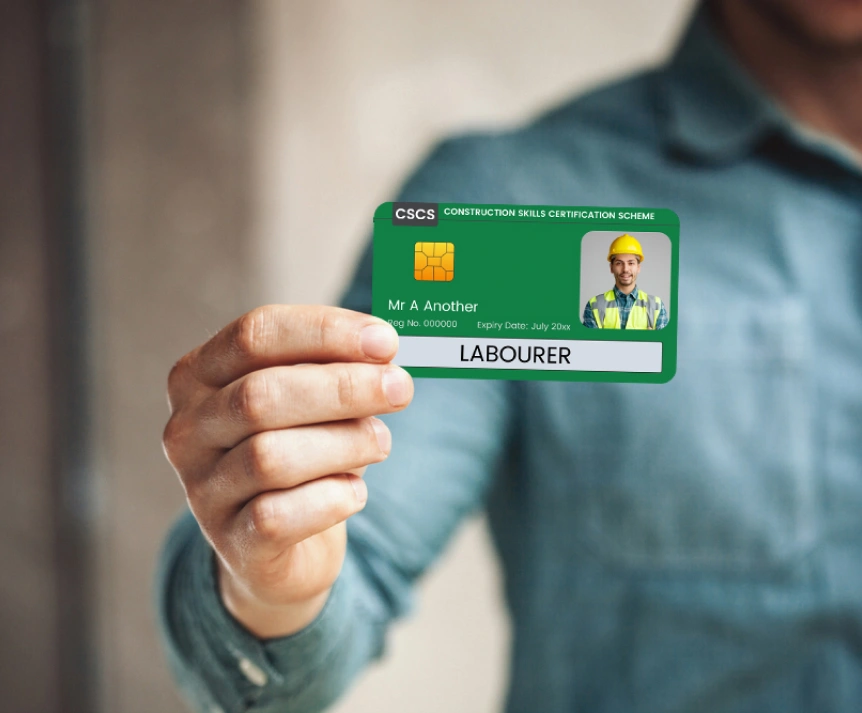
Who is a Banksman?
A banksman, also known as a vehicle banksman, is trained and authorised personnel who directs heavy vehicles like trucks, bulldozers, JCBs, etc. and their drivers in workplaces and roads. Driving large and heavy vehicles obstructs the surrounding view of the drivers. So, a vehicle banksman ensures that any manoeuvres they perform are safe and don’t endanger the driver or anybody else.
The banksman uses a radio link or pre-arranged hand gestures to communicate with the driver. Since the driver may not have a complete vision or clear visibility, the banksman can advise the driver of what is going on around the vehicle in this manner. A Vehicle Banksman can also be called upon to do various other tasks, such as traffic control in and around the construction site. As a result, they are often also known as traffic marshals.
What does a Banksman do?
The primary duty of a banksman is to supervise and manoeuvre the movement of humans and vehicles within proximity of a workplace. But they also have various secondary duties that include:
- Providing plant operators with clear, accurate, and safe instructions.
- Ensuring the safety of employees and other equipment.
- Maintaining vehicular traffic in and around the workplace.
- Separating automobiles and humans.
- Managing traffic to avoid the queuing of people.
- Verbal and radio communication with drivers, plant operators, and industry-standard hand signals.
- Keeping workers and equipment safe.
- Maintaining a calm and active demeanour at all times.
Types of Banksman
Banksmen can be classified based on where they work. Some of them include
- Signallers – A banksman who assists in lifting cranes and directs them using signals are called signallers.
- Vehicle Banksman – A vehicle banksman is trained to control and direct the movements of vehicles in workplaces. They ensure the seamless movement of vehicles to reduce traffic.
- Railway Banksman – The responsibilities of a railway banksman are to supervise train schedules and inform the authorities of any delays. Also checks trains’ movements on various routes.
Personal Protective Equipment
- Work Vest
- Helmet
- Safety Shoes
- Gloves
- Safety Glasses
Standard Signals of a Banksman
| Instruction | Hand Signal |
|---|---|
| Start | Both hands are spread sideways with palms facing forward. |
| Stop | Right hand raised upwards with palm facing forward. |
| End of operation | Both hands are clasped at the height of the chest. |
| Move towards Banksman | Both hands are bent with the palm facing towards the body, making slow movements towards the body. |
| Move away from Banksman | Both hands are bent with the palm facing away from the body, making slow movements away from the body. |
| To Banksman’s right | The right arm is extended at a right angle. |
| To Banksman’s left | The left arm is extended at a right angle. |
| Horizontal distance | The hands indicate the appropriate distance. |
| Vertical distance | The hands indicate the appropriate distance. |
| Horizontal distance | The hands indicate the appropriate distance. |
| Raise | The right arm faces upward and revolves slowly. |
| Lower | The right arm faces downward and revolves slowly. |
| Danger | Both hands are raised above, with the palm facing forward. |
The Necessity of a Banksman
On average, 1 out of every 5 workplace fatalities is caused by people being struck by moving automobiles. In the most recent RIDDOR reporting period, there were 20 workplace fatalities in the UK due to vehicle incidents. Furthermore, moving cars on construction sites causes one out of 50 non-fatal injuries.
Moving cars should be regarded as a significant hazard by all health and safety managers in charge of workplaces with moving vehicles. A suitable amount of time and resources has to be allocated to minimise the likelihood of an event occurring.
In many businesses, where limited space or resources increases the risks from moving vehicles, the banksman presence is vital.
Banksman Legislation
- Workplace (Health, Safety and Welfare) Regulations, 1992 – Ensures the employees’ health, safety and welfare at work.
- RIDDOR 2013 Regulations – It is compulsory to report workplace accidents and dangerous occurrences in a workplace to employers.
- Managing Health and Safety Regulations, 1999 – Employers must arrange for emerging risks and hazardous circumstances and employ people to handle them.
- Health and Safety (Signs and Signals) Regulations, 1996 – This act provides information about communication using hand signals, signs, acoustic signals and signboards.
Steps to get a Banksman Course certificate
Construction Skills Certification Scheme (CSCS) is the skills certification scheme in the UK construction industry. It certifies and provides a card to people with specialised skills who can find employment in a particular environment.
- Enrol for a 1-day training for Banksman course and obtain the Level1 Health and Safety qualification construction environment certificate. Collect your certificate on completion of the course. You can choose to study from specified Hurak study centres or from the comfort of your workplace/home through our online course, where the trainers will arrive at your behest.
- Qualify and pass the Health, safety and environment test, an objective test with multiple-choice questions. It takes place in an official exam centre.
Banksman Course Content
Hurak’s Banksman course covers a wide range of topics, including:
- Mobile Plant and Vehicles
- Hazards and Potential Risks
- Reversing
- Control Measures
- Using Method Statements
- Employee and Employee
- Responsibilities
- Communication Between
- Operators and Others
- Banksaman and Signalers
- Banksman Safety
- Banksman Signals
- Warning Signs and Symbols on Site
Advantages of the Banksman Course
- It saves your time and money
- Increases your chances of getting employed
- Enhances your credentials
Skills in a Banksman
Other than the knowledge gained by the course, a banksman should also have the following skills:
- Attentive to detail – A banksman must be detail-oriented to help drivers steer within a work site. They have to signal the driver according to the size and structure of the vehicle.
- Communication Skills – The job of a banksman entails communicating with different kinds of drivers who understand the practical and clear instructions of the banksman.
- Deft with hand movements – Expert in hand signals is the most critical prerequisite skill in a banksman.
- Basic knowledge of safety procedures – Awareness of basic on-site safety and making the drivers and workers adhere to it is also a significant skill. You may need to educate/train others on health and safety guidelines.
- Patient and capable of handling stressful situations – If stuck in a tricky situation, you must retain your composure and think clearly.
Salary of a Banksman
The salary of a banksman varies according to the experience they have:
- Recruit – £20,000 to £25,000 per annum
- Experienced – £25,000 to £50,000 per annum
Salaries are subject to change concerning employers, location and the duration of the work.
Career Progression
Gaining experience as a specific type of banksman will improve your skills and enhance your career prospects by becoming an aircraft Marshall or a rail signaller. You can also become the lead supervisor for a workplace or a site manager.
The Banksman Training Course or the Traffic Marshal Training shows how to use standard hand signals used by banksmen (or traffic marshals) across the UK and Europe. It also explains how to follow laws like the Health and Safety (Safety Signs and Signals) Regulations 1996 and the Health and Safety at Work Act 1974.




